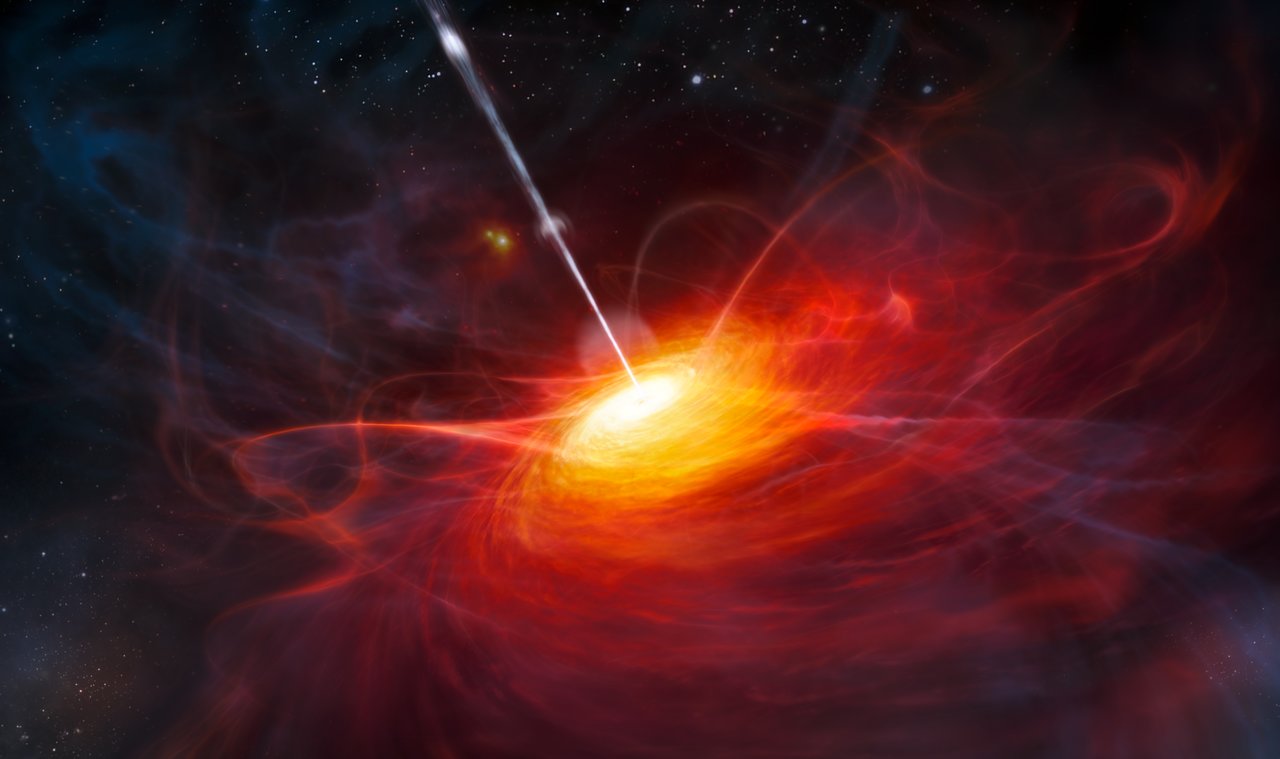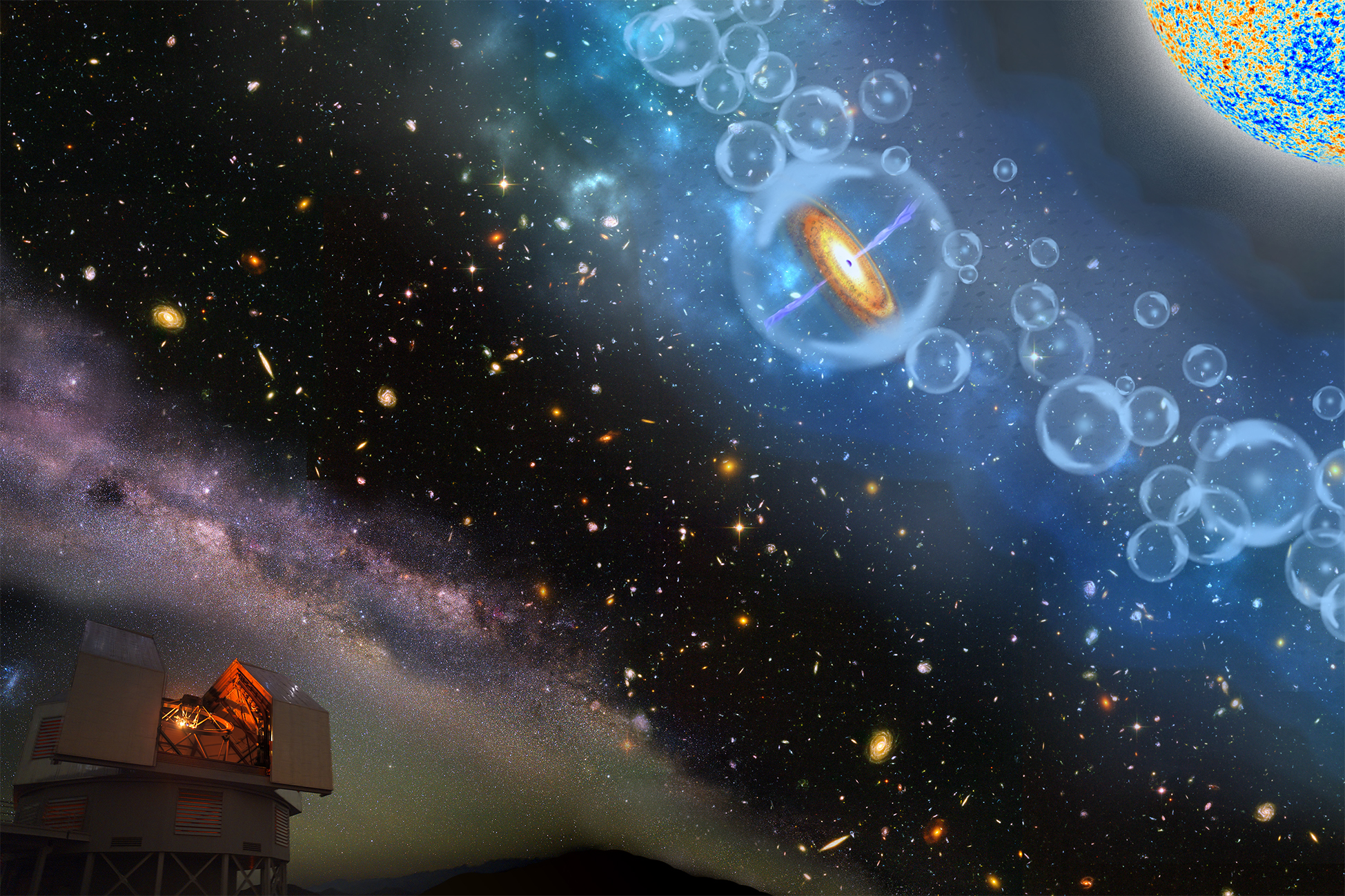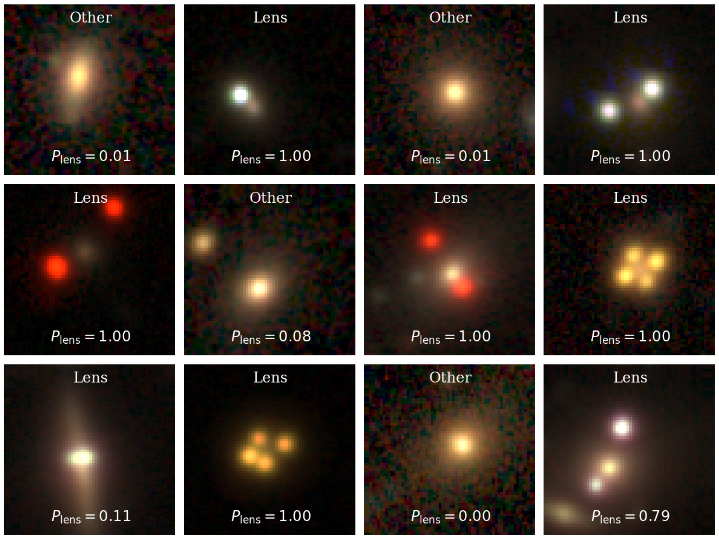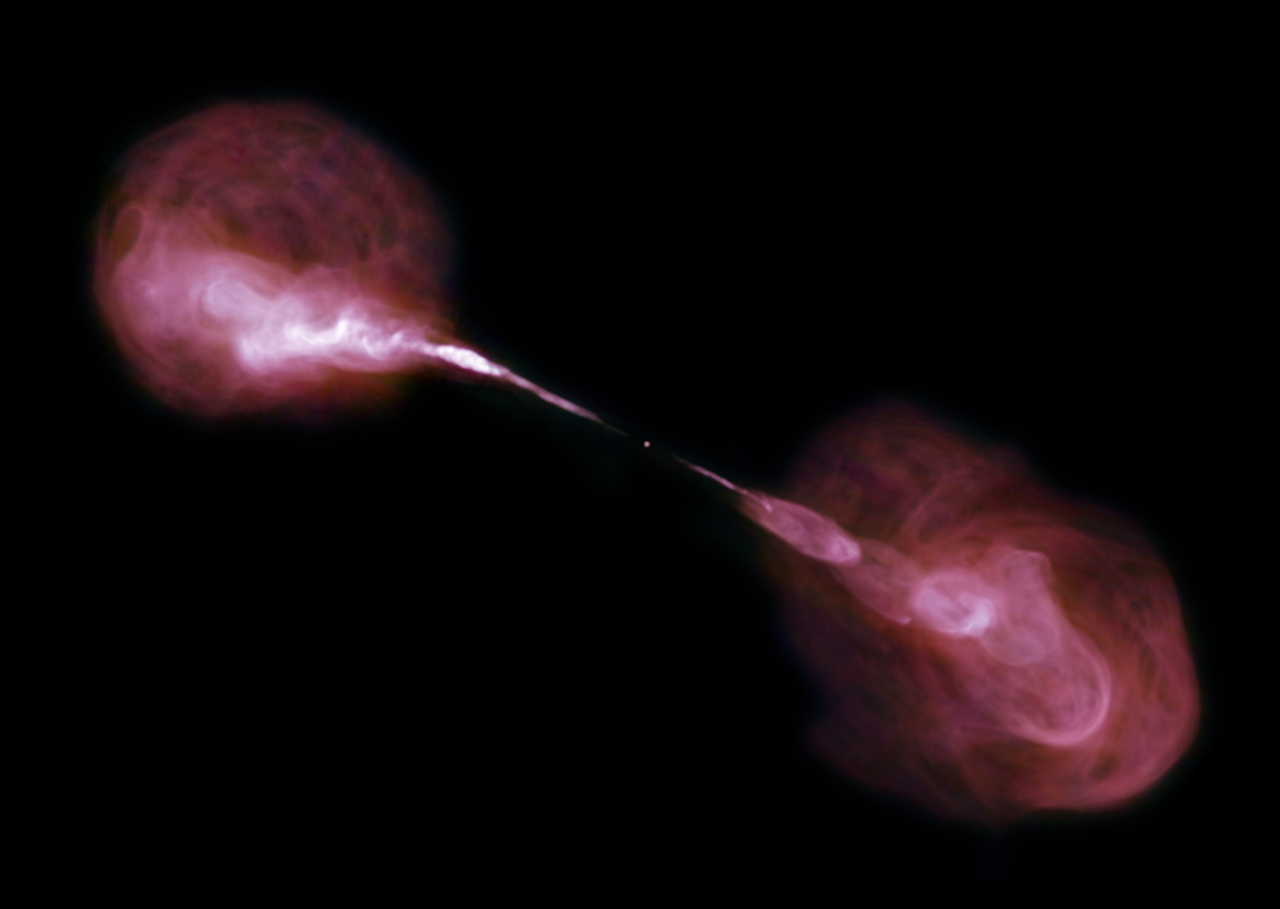Research
On the Nature of Active Galaxies: Emission Properties and Correlations
My research interest includes the observational study of the active galactic nuclei (AGNs) to understand their origin, physical processes, and evolution. AGN is powered by matter accretion onto a supermassive black hole (SMBH). The produced energy is usually released as radiation, winds, and jets.
 |
|---|
| An accreting supermassive black hole at the center of an active galaxy. Image credit: ESO/M. Kornmesser. |
My previous works incorporate the study of Type 1 AGNs using SDSS data combined with ROSAT, GALEX, 2MASS, and FIRST catalogs. Supported by these rich datasets, we can investigate AGN statistical properties and understand the physics behind emission lines – i.e., the Baldwin effect and the Eigenvector 1 correlation. We can also study the feedback mechanism by radiation/jets and examine the associated physical trends – e.g., mass, accretion rate, metallicity, orientation, ionization parameter, etc. – in the proposed “H-R diagram” for broad-line AGNs. More information can be found in Andika et al. (2020).
Supermassive Black Holes and Galaxies in the Early Universe
Quasars are the most luminous non-transient sources in the Universe. At high redshifts (z > 6), they can have billion-solar-mass black holes as early as < 1 Gyr after the Big Bang. Hence, quasars are excellent probes for understanding the build-up of the first SMBHs and their host galaxies, the early structure formation, and the nature of cosmic reionization.
 |
|---|
| Artist’s conception of the most-distant supermassive black hole ever discovered, part of a quasar from just 690 million years after the Big Bang. This object is surrounded by neutral hydrogen, indicating that it is from the period called the epoch of reionization, when the Universe’s first light sources turned on. Illustrations by Robin Dienel provided courtesy of the Carnegie Institution for Science. |
We currently dove directly into selecting the quasar candidates using data from Pan-STARRS, UKIRT, and WISE. Statistical methods are applied to generate a well-vetted list of candidates and infer their purity. Some have been followed up with Magellan/FIRE, Gemini/GNIRS, and VLT/MUSE, which led us to discover PSO J083+11, an intriguing weak-line quasar at z = 6.34. HST/WFC3-ACS imaging shows no gravitational lensing affecting the apparent emission. Submillimeter observations with ALMA reveal that the quasar host has an extreme star formation rate. The age measured from the proximity zone size suggests that this source belongs to the young quasar population with a lifetime of only ~10,000 yr, which poses significant challenges to the current black hole formation models. For details, please have a look at our papers (Andika et al. 2020, 2022).
Searching for Lensed Quasars through Deep Learning
Another notable issue in the z > 6 quasar surveys is the scarcity of gravitationally lensed quasars. For decades, it has been predicted that up to a third of high-z quasars should be strongly lensed. However, only one has been found so far (i.e., J0439+1634 at z = 6.51). A re-examination of previous selection techniques indicates a substantial bias against lensed quasars.
 |
|---|
| Example of negatives (galaxies and point sources) and positives (mock lenses) in the training dataset. |
Deep learning approaches based on the convolutional neural network (CNN) and vision transformer (ViT) architectures have shown to be effective in pattern recognition. Subsequently, we exploit these techniques to the multiband images from HSC, DES, UKIRT, VISTA, and WISE to search for galaxy-scale strong lenses. The training datasets are constructed by painting simulated lensed arcs over actual galaxy images to generate realistic galaxy-quasar lens models. As a result, we present new lensed quasar candidates waiting for spectroscopic confirmation (Andika et al. 2023a, 2023b).
Cosmic Evolution of Radio Active Galactic Nuclei
 |
|---|
| This VLA radio composite image shows the active galaxy 3C 348, also known as Hercules A. The VLA data, which record frequencies from 4-9 GHz, were taken in 2010-2011. Image credit: R. Perley and W. Cotton (NRAO/AUI/NSF). |
A few years ago, I participated in the LOFAR radio survey project. My research aims to characterize radio AGNs using brand-new observations in the low-frequency region of the electromagnetic spectrum. By constructing the radio AGNs luminosity function, we can study the different modes of the black hole accretion out to unprecedented distances, providing critical constraints on the models of black hole formation and AGNs unification theories. Check out Andika et al. (2019) for the details.
List of Publications
My publications are listed through the links below. I usually store my scientific results in ResearchGate, while popular articles about astronomy are posted in XploreAstro. You can also find my refereed articles via the Astrophysics Data System (ADS).

